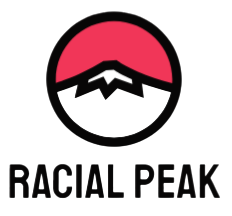At the point when the vast majority chooses to buy decking material, the main thing they consider is either the presence of the wood or its expense. A shockingly ignored part of decking material is the wood’s auxiliary soundness. On the off chance that you pick a temperamental decking material, you risk the deck sheets distorting or checking. Twisting is the propensity of wood deck sheets to twist inwards along their longwise edges. End checking alludes to the finishes of deck sheets breaking and parting as they ingest and remove dampness. Both distorting and checking are large issues for a deck proprietor, and can cost a ton of time and cash to fix.
Fortunately, the solidness of wood animal groups is moderately simple to gauge. There are sure normalized estimations that are utilized to decide the mechanical properties of every wood species, and those properties reveal to us the soundness and strength of the wood being referred to.
Proportions of Stability
The two principle properties used to quantify soundness are unrelated and spiral shrinkage. Both outspread and distracting shrinkage allude to how many a wood animal varieties will in general therapist during the drying cycle. Outspread shrinkage happens toward the path from the focal point of the composite decking to the bark, while unrelated shrinkage happens extraneously, or equal, to the tree’s development rings. Both spiral and digressive shrinkage are estimated as a rate. The lower the rate, the less the wood will recoil during the drying cycle and the more dimensionally stable the board will be when introduced.
While both spiral and distracting shrinkage rates are significant all alone, the most ideal approach to quantify a wood’s security is to consider these properties together. The more modest the differential between the two estimations, the more steady the wood. For example, if a types of wood recoils twice as much along its width than it does through its thickness, the sheets of that wood would twist and twist considerably more than the sheets of a wood with much lower spiral/extraneous differential.
Stable Wood Species
Presently that we’re acquainted with how solidness is resolved, we should take a gander at the most steady sorts of homegrown and colorful decking woods.
Domestics:
Homegrown woods are for the most part softwood, which implies they are less thick, less hard, and cannot remain as much weight. Nonetheless, this does not mean there is not incredible softwood decking choices accessible. Two of the steadiest softwood decking alternatives is Western Red Cedar and California Redwood.
Western Red Cedar
In spite of the fact that cedar is softwood, it is still fundamentally steady. Both the distracting and outspread shrinkage are very low, and the differential between the two is little also:
Distracting Shrinkage: 5.0 percent
Spiral Shrinkage: 2.4 percent
Cedar’s other mechanical properties – quality, solidness and thickness – are likewise generally high, making this a tough animal groups useful for most decking ventures.
California Redwood
California Redwood is another truly steady decking material. The digressive and outspread shrinkage esteems are even lower than those of Cedar:
Digressive Shrinkage: 4.9 percent
Spiral Shrinkage: 2.2 percent
Despite the fact that these rates are lower than those of Cedar, the differential is 0.1 percent bigger, which means it, is somewhat less steady than different species – however barely.
Exotics:
Fascinating hardwoods are denser, heavier and will in general have higher unrelated and outspread shrinkage rates. Does this make them less steady? Not generally. The differentials for some exotics are lower than their homegrown partners, making them all the more fundamentally solid.
